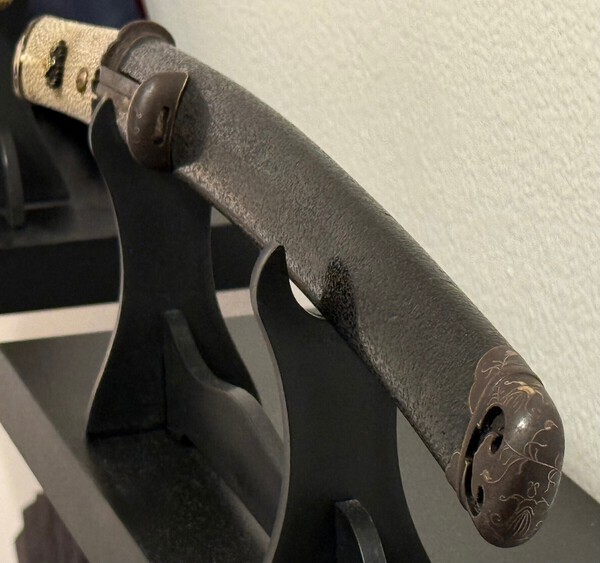-
Posts
554 -
Joined
-
Last visited
-
Days Won
2
Content Type
Profiles
Forums
Events
Store
Downloads
Gallery
Everything posted by Tcat
-
Dimensions are as follows - Fuchi: 38.5 x 21.8 x 10 mm. Kashira: 30 x 14.2 x 12.7 mm. Koiguchi: 38.5 x 21.8 x 12.3 mm. Kurigata: 35.5 x 16.3 x 17.3 mm. Kaeritsuno: 37.7 x 12.9 x 13.7 mm (including base) Kojiri: 36.2 x 35 x 18.2 mm. Bashin: 128 mm x 8.3 mm x 2.7 mm. Kiri Wood Box: 25.4 × 9.5 × 3.2 cm.
-

Juyo swords found in Shin Gunto Koshirae
Tcat replied to PNSSHOGUN's topic in General Nihonto Related Discussion
The sword world is so ''small and getting smaller'' that for the sake of its own continuation simply can't afford to pick and choose. Meanwhile for the record, exclusionist policies while romantic are doomed to eventually fail and their proponents destined for pariah status. -

Juyo swords found in Shin Gunto Koshirae
Tcat replied to PNSSHOGUN's topic in General Nihonto Related Discussion
It's very simple really. When you're good at something, people who know quality will find you and won't care if you are 'gaijin' or not. -
Some further specification on this oni subject… I think in this case they should be described as “biting lion heads” (獅噛). The theme was recently shared on the Met’s arms and armor page..I include a screenshot of the search term in google. 🦁
-
I will preface the following remarks with the caveat that as enthusiasts or professionals I believe we ought to do what we can to try to preserve these objects. Furthermore, I am not encouraging willy-nilly experimentation, but the deft and sympathetic hand of someone who cares. With that said... In the case of old tsuka cores and itomaki which have become so dusty and beatup as to warrent consideration for recycling, a final lease of life may be given with a few strategically and carefully placed microdots of superglue, followed by a gentle stage-by-stage cleaning of the ito and samegawa with a soft bristled toothbrush. You may be surprised at the results you can achieve with some patience. First nudging the ito around, working with what you have left to get its most appropriate position before tacking it down. Its already broken in a few places and if you want it properly functional again you would likely have to build a new core and rewrap it. Be wary that old silk can become much like a solid powder, similar to a block of ladies' foundation that can be brushed and wiped away into oblivion if one is not careful. Its fragility will depend on its age and storage conditions, but textural integrity is almost impossible to discern from photos alone. Done carefully, stage by stage without soaking it, dabbing a soft bristled toothbrush with a water and mild soap mix, rinsing then drying off each patch with absorbant paper as you go is the only way I know of, and works pretty well. Other solvents are too harsh. After removing as much of the moisture as possible with absorbant paper, to get it completely dry you can just leave it at room temp for a few days rather than any extra heating or airflow.
-
They are demons, not dogs. The 'front-on' pose is classic, and these kinds of menuki are often made in identical pairs, in the same way that most tsubogasa style menuki are also made in identical pairs - its quite normal and proper. Probably late edo oni menuki, not repurposed pouch ornaments and not oversized for the application, just right for a fancy shin-shinto or Meiji look... Heres an example similar design, yours are nicer..
-
You know, I wanted to say this and I find it a very plausible explanation. I want to change my guess now
-
Here are tthree examples of what are to me 'classic non-dragon jakushi'. The work gives a similar vibe - however the seppadai does indeed look 'namban'. Meanwhile it is not unheard of to find namban tsuba that were given a beauty treatment with gold and precious metals. Anyway, the style is similar enought to make me wonder.
-
That was fun, I did have a few guesses though. The sugata is a ringer for some Kunisada. Very good looking sword and thank you for sharing.
-
For $130 I don’t think you did badly at all. I believe the tsuba is Jakushi school. The tsuba shape is unusual and noteworthy in itself. Enjoy the tsuba, you can learn 10x more from things in-hand than photos alone!
-
Indeed. This one is a chonk with 1.3 inch at motohaba, kasane up over 1/3 of an inch.
-
-
Points to Awataguchi Ikkanshi Tadatsuna (?)
-
Izumi no Kami Kunisada or Settsu no Kami Masayuki
-

Advice for new collectors from an old dog
Tcat replied to R_P's topic in General Nihonto Related Discussion
You did not tick all the boxes. Where is mumei? Do it with suriage mumei Shinto and we’ll be impressed. -
Hi Geraint, As far as I can see, all of the better lit areas on this tsuba show the hallmarks the honzogan technique. Note the channels / recesses where the soft metal wire inlay is missing. If you zoom in on the left hand side of the image they are clearer. The right hand side doesn’t have enough light to make out the channels, but they seem consistent enough on the left of the image where inlay is missing Meanwhile, the subject matter and execution is very much in the style of kaga-zogan, so if not true kaga-zogan then I think it’s “in the style of kaga-zogan”. Here’s a couple papered examples along with an “anecdotal” example of what I consider to be classically representative of “kaga-zogan” (the rain dragon tsuba). Cheers 🍻




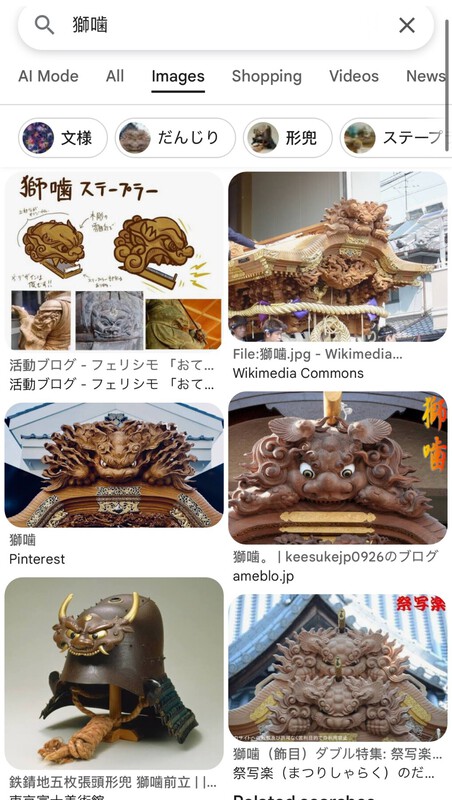

.thumb.jpeg.fad864d31e1088b137cbcec3183d285c.jpeg)

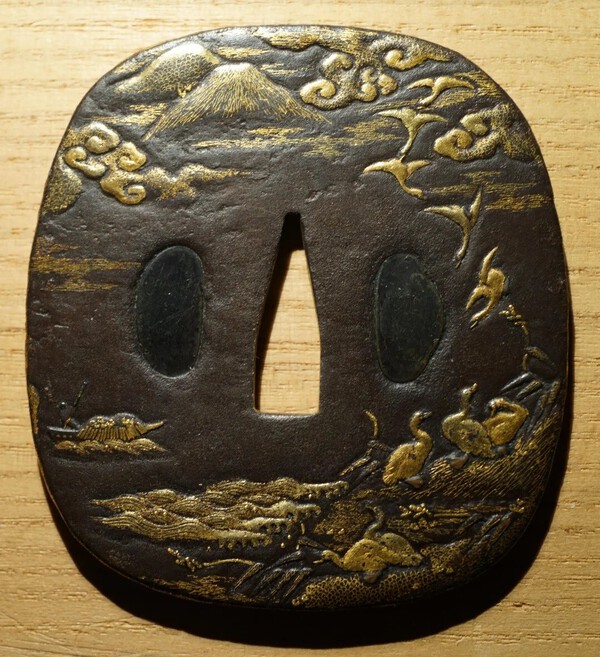
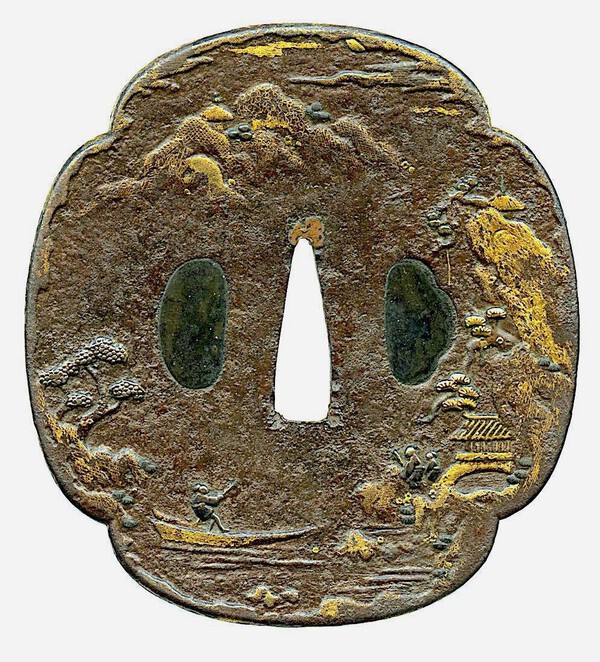
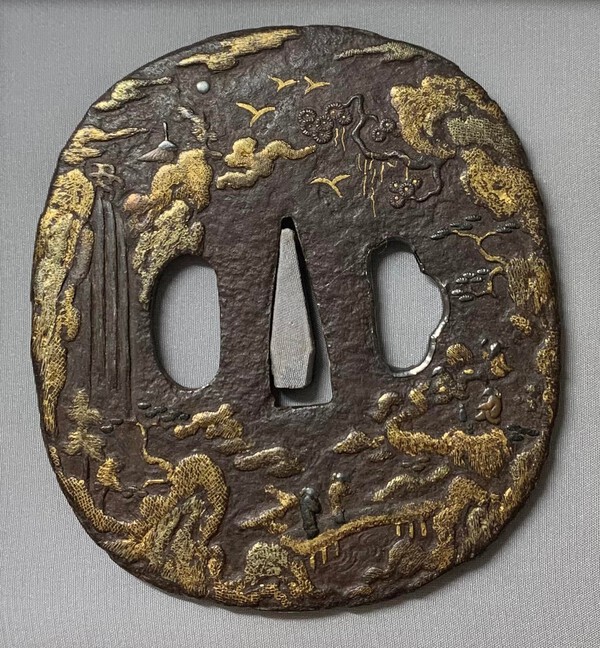
.thumb.jpeg.610274ddf49f25163aab1b789da30787.jpeg)



